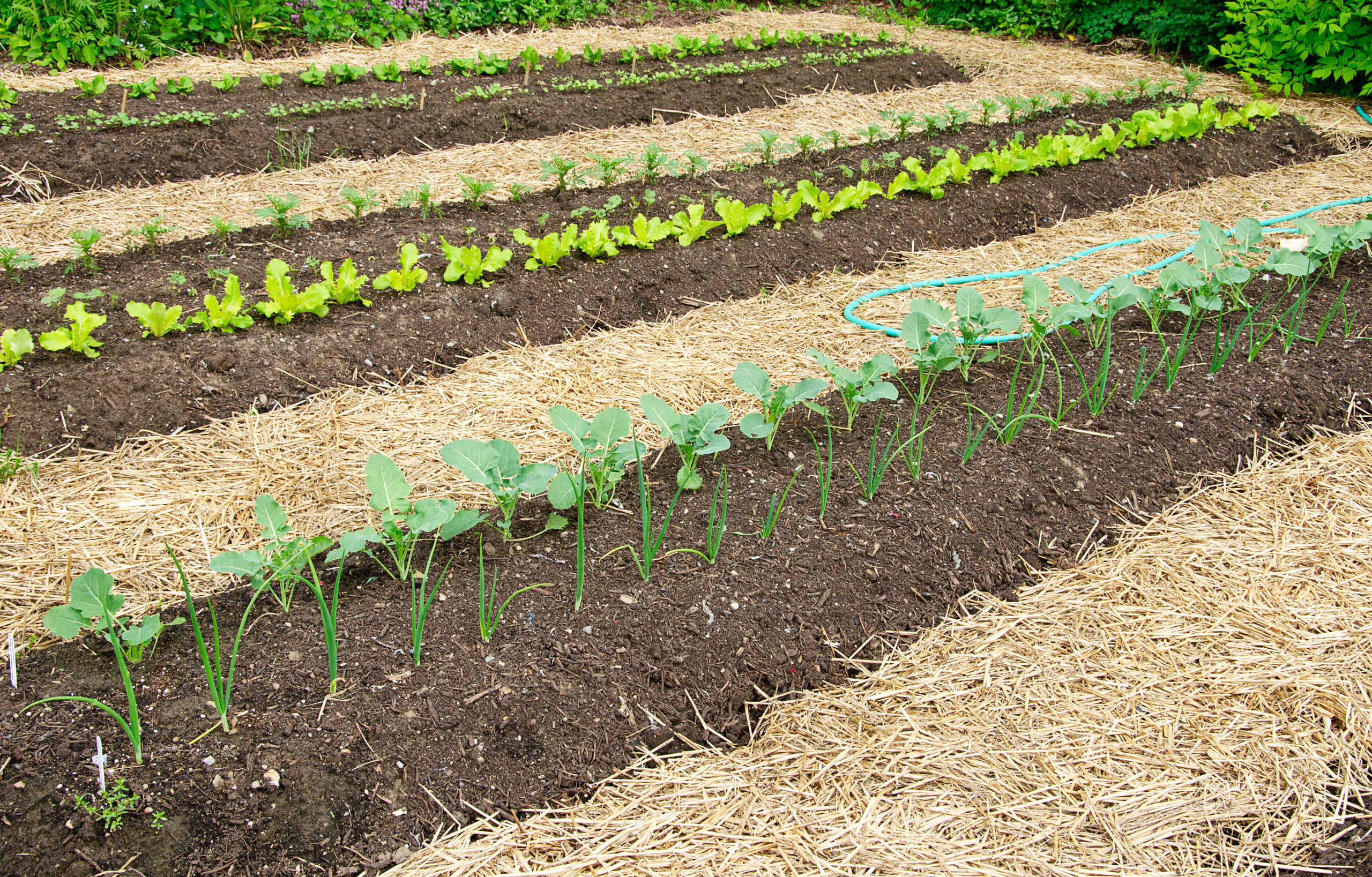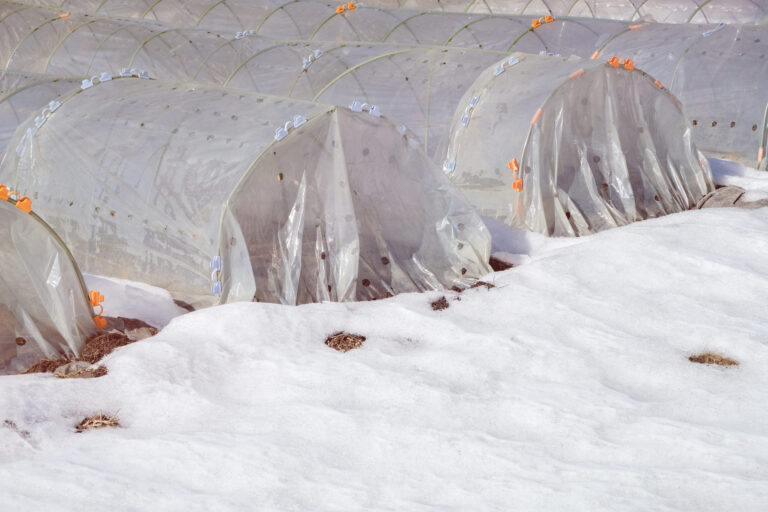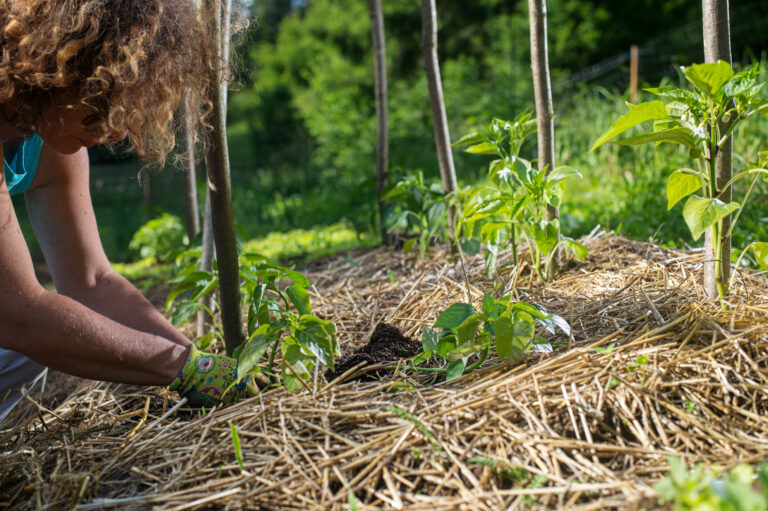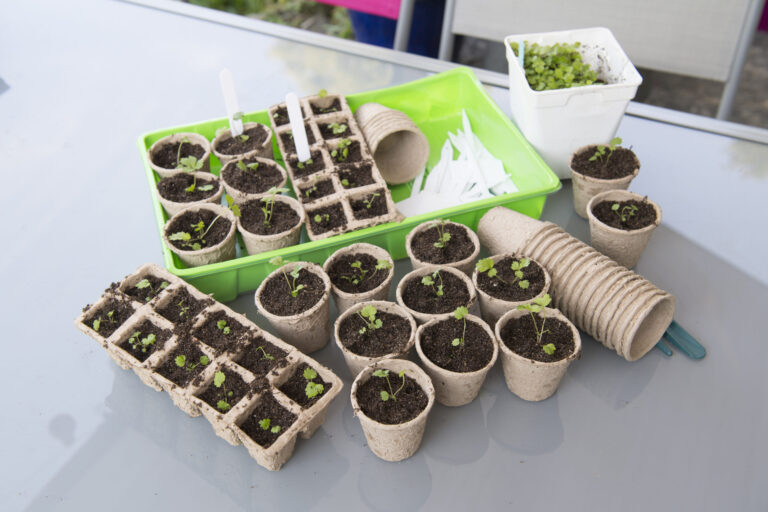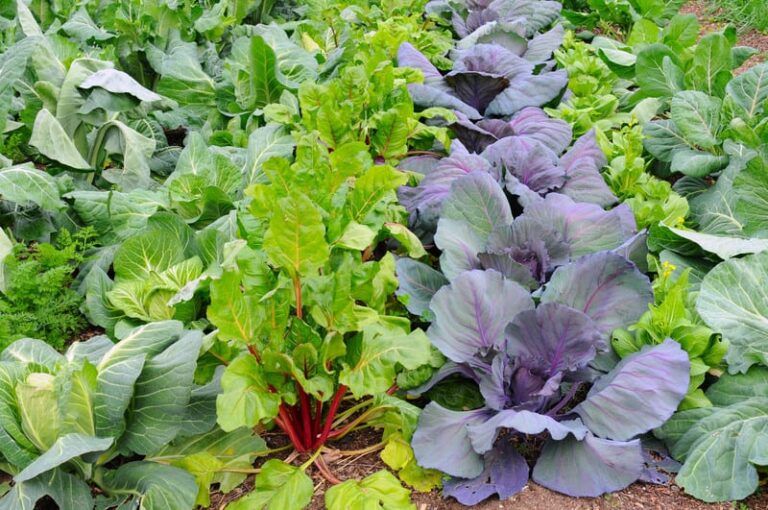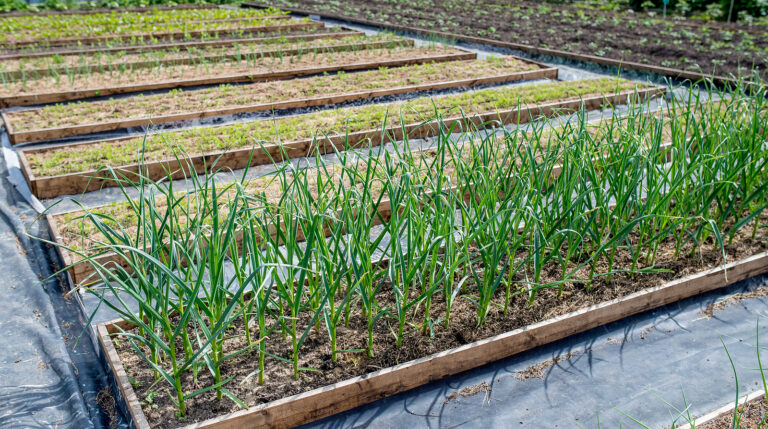January Vegetable Garden Zone-by-Zone
January brings the start of a new garden season. All gardeners can begin planning this year’s vegetable and herb garden in January and some will start planting this month.
To start the vegetable garden year, ask yourself these questions:
- Which vegetable do we want for fresh eating?
- Which do we want for freezing and storing as well?
- How many mouths are we feeding?
- Did we grow enough last year?
- Which do my family and friends never get enough of?
Make a list of the crops you want to grow this year. Start purchasing seeds and supplies.
In garden Zones 7 to 11, you can start planting this month. In Zones 7-9a, start crops indoors or in a cold frame or plastic tunnel. In Zones 9b-11, you can start seeds indoors and outdoors. Cool-season crops can go in the garden now with protection in Zones 8-11.
Here follows a roundup of vegetable garden opportunities and tasks for the month of January. Use the map to determine in which USDA zone you are located.
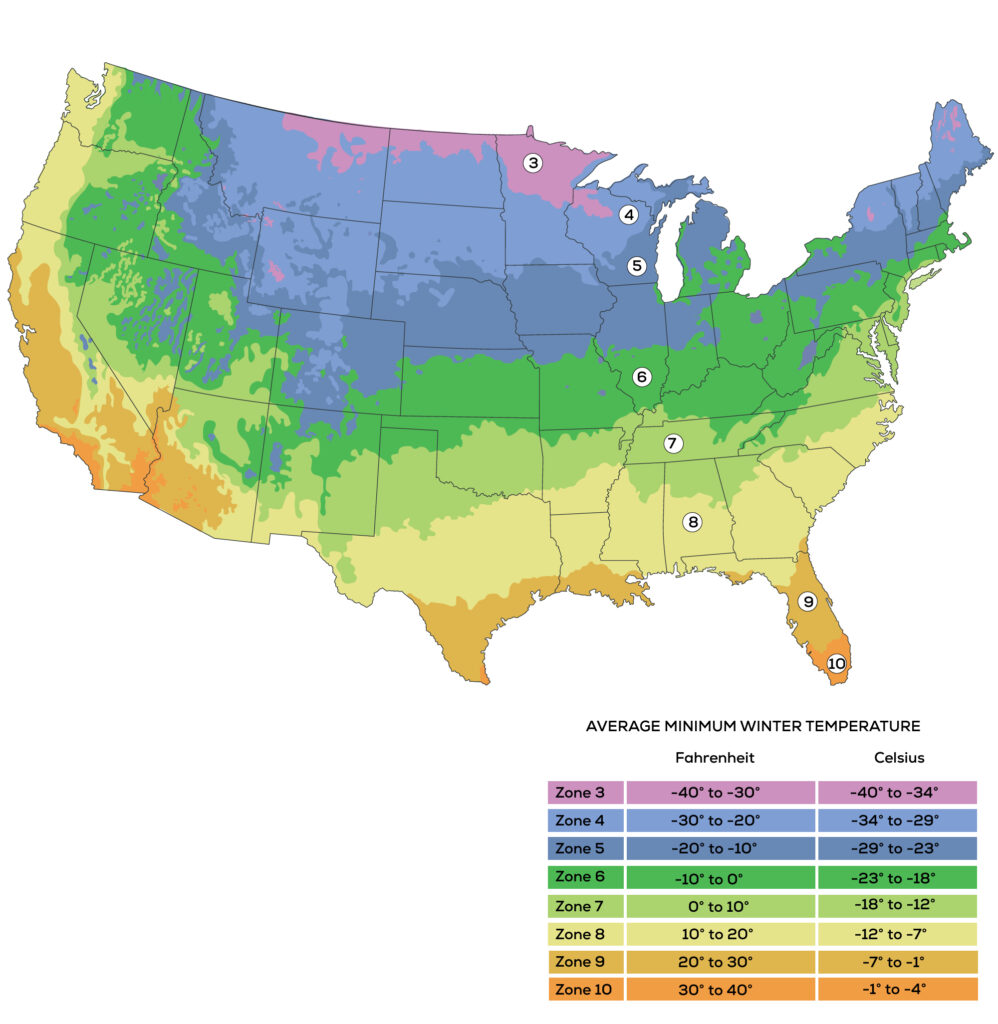 Vegetables & Herbs
Vegetables & Herbs
Zone 9b-11: Prepare empty parts of the garden for planting. Work aged compost into the soil.
Direct-sow cool-season crops. Plant early-maturing crops such as Bibb lettuce, turnips, radishes, and spinach; plant these where after harvest you can replant with tomatoes, corn, beans, and other warm-weather crops after frost danger is past. Plant seeds of artichokes, beets, Brussels sprouts, cabbage, carrots, cress, endives, kale, kohlrabi, lettuce, mustard, onion sets, parsley, peas, and Swiss chard. Plant Irish potatoes and rhubarb.
Sow summer vegetables and tender herbs indoors, or in a cold frame or plastic tunnel; tomatoes, peppers, eggplants, and globe artichokes can be started indoors now. Plant asparagus and artichoke roots. Fertilize crops in the garden.
Zone 8-9a: Prepare the garden for planting. Direct-sow spinach and radishes. Sow other cool-season crops (see list above and below) indoors or in a cold frame or plastic tunnel; these will be transplanted out to the garden next month. Plant asparagus roots.
Check beets, carrots, garlic, onions, potatoes, squash, and sweet potatoes in storage for bruises, damaged rinds, or other signs of decay. Also check celeriac, kohlrabi, turnips, and winter radishes—in storage or in the ground.
Zones 7-10: Set out transplants of broccoli, cabbage, spinach, and lettuce. Direct sow seeds of arugula, bok choy, fennel, carrots, radishes, spinach, beets, turnips, and peas. Plant dill, parsley, cilantro, and chervil from seeds or transplants. Plant asparagus crown and strawberry transplants.
Zone 7: Update garden plans for spring plantings. When the soil is workable, direct sow peas, early cabbage, spinach, and lettuce. Plant onions sets. Order new seeds; here are a few suggestions for the coming season: Kentucky Wonder bush and pole snap beans, Henderson’s bush lima bean, Sieva pole lima bean, Detroit Dark Red beet, Charleston Wakefield cabbage, Georgia collards, Gold Cross Bantam sweet corn, Straight Eight cucumber, Black-seeded Simpson leaf lettuce, Florida Broadleaf mustard, Perkins Longpod okra, Bermuda onion plants, Thomas Laxton English peas, Katahdin Irish potatoes, Early Scarlet Globe radish, California Wonder Bell pepper, Yellow Summer Crookneck squash, Celebrity tomato, Purple Top Globe turnips, also eggplant, New Zealand spinach, and Swiss chard.
Zone 4-6: Update garden plans for spring plantings. Plan succession and crop rotations for this year’s garden. Test stored seeds for germination. Be sure supplies are on hand for indoor seed-starting. Order new seeds. Sow seed indoor– broccoli, Brussels sprouts, cabbage, kale, leeks, onions, and shallots.
Look over vegetables and fruits in storage and sort out those that need to be eaten right away from those that will keep another couple of months.
Zone 3 and warmer: Update garden plans for spring plantings. Plan succession and crop rotations for this year’s garden. Test stored seeds for germination. Seeds that keep only one year are carrots, celeriac, celery, leeks, onions, parsley, parsnips, scallions, and shallots; they may not be viable a second season. Be sure supplies are on hand for indoor seed-starting.
Check your tools during the slack season; sharpen or repair tools in need. Also check stakes, labels, pots, flats, and fertilizers.
Fruit
Zone 8-11: Plant bare-root nursery stock—trees and berries. Plant strawberries. Prune deciduous trees, berries, brambles, and grapes. Fertilize established trees and strawberries. Check for overwintering pests; apply dormant oil sprays while trees are still dormant.
Remember to prune trees moderately. If trees have been neglected, bring them into shape over a 2- or 3-year period. The severe shock of heavy pruning may throw the tree into gumming, may result in sunburn of branches and fruit, or weaken the tree.
Zone 1-7: Order nursery stock for spring planting. Check tree guards, tree wraps, and mulches. Check stakes on fall-planted trees. On mild days when the temperature is warmer than 40°F (4.4°C), prune apples, pears, berries, brambles, grapes, and other deciduous fruits. Also, on mild days, check for overwintering pests. Apply dormant oil sprays if the temperatures have been warmer than 40°F (4.4°C) for at least 24 hours.
January Cold Regions — East, Mid-West, Rocky Mountain, Plain State
Here is a vegetable and fruit planting guide and a food garden checklist for the East, Mid-Atlantic, Midwest, Rocky Mountain, and Plains States for the month of January.
Snow and ice prevail and freezing temperatures continue in these regions this month. These regions include USDA Zone 3 and 4 in the Rocky Mountain and Upper Plains States and far Northern New England; Zones 5 and 6 along coastal New England and the Mid-Atlantic States and stretching across the lower Midwest and Plains States.
Vegetables Indoors: Sow indoors lettuce, arugula, corn salad, basil, and Italian parsley to grow under fluorescent light.
Fruit Trees and Berries: Start pruning fruit trees on mild days. Prune pears, plums, apples, and bush fruits such as gooseberries and currants if the weather permits. Prune grapes now if you haven’t done so already.
Remove suckers and growth damaged by ice and snow, dead wood, broken branches, or crossing branches.
If storms have cracked any tree branches and left them hanging, cut them off cleanly before they sway and rip loose more bark.
Check the winter protection for trees and plants. Look for sunscald, frost heave, and rodent damage. Slender fruit trees of moderate height bent over by ice storms can be righted as soon as the ice melts off. Trees can be held in place by guy wires and tree supports.
Watch for signs of over-wintering insects and diseases such as borers, caterpillar nests, galls, and scale. Destroy tent caterpillar egg clusters on apple twigs. They look like dark amber collars. You can remove them easily with a twist of your thumb and forefinger.
Outdoor spraying requires a minimum air temperature of 40ºF (4º) and 50ºF (10ºC) is best. Mummified fruits clinging to twigs of apples or other twigs can be disease-laden, so pick them off and dispose of or burn them.
Don’t shovel snow away from the root areas of trees—it does more good than harm.
Barefoot fruit trees can be planted if the ground is ready to dig.
Garden planning and maintenance: Allow more space for vegetables in next season’s garden, and use it to better advantage than you did before. Drawing a plan to scale now means that the amount of seed and materials can be ordered early.
In light of last year’s experience, what changes in your plantings ought to be made? Write down your answers and make a plan.
Inventory your supplies: order vegetable seeds, and bare-root plants for April planting.
Clean and sharpen garden tools. Check your other supplies as well: stakes, labels, pots, flats, insect controls, and fertilizers.
Indoors, cold frames, and hotbeds: Take a look inside the wintering-over cold frame. If mice have entered, get after them at once with a trap or two. Dry soil is the signal for light watering when a few above-freezing days arrive.
Don’t let the sun in on plants in the frame during a tempting warm spell. The whole idea of a cold frame is to keep the contents of the frame cold until, in late winter, they can be gradually warmed up for an early start. A little ventilation can be given occasionally when the outside temperature is in the 30’s (-1 to 3º C).
January West Coast and Lower Southwest
Here is a vegetable and fruit planting guide and a food garden checklist for the regions of the West Coast and Lower Deserts of the Southwest of the United States for the month of January.
Late frost is possible along the West Coast and the Southwest this month. The West Coast and Lower Southwest Deserts lie mostly in USDA Zones 8 and 9. A few areas fall into USDA Zone 10.
Vegetables: Begin to prepare the soil for the garden. Spade deeply as you work in plant nutrients and humus.
In Zone 10, set out seedlings or sow cool-season vegetables and herbs. Plant asparagus, beets, Brussels sprouts, cabbage, carrots, cress, endive, kale, kohlrabi, lettuce, mustard, spring onions, onion sets, early potatoes, parsley, parsnip, peas, potatoes, salsify, and Swiss chard.
In locations where winters are warm, tomatoes can be started early. Seed can be germinated in a cold frame, then transplanted in pots or flats until mid-February. Plant them out as early as that, they will need the protection of caps or jars.
Plant perennial vegetables such as asparagus crowns, globe artichokes, strawberries, and rhubarb roots.
In Zone 9, sow warm-season vegetables and herbs in the cold frame to transplant out after the last frost.
Prepare beds for spring planting if the ground is friable. Spade a rich compost into areas to be planted at least a week in advance of planting. For tomatoes, select a location where they have not been grown for a year or more.
Continue to water regularly.
Fruit Trees and Berries: Plant dormant fruit trees, berries, and nuts. Young trees that are dormant will get a good start if planted now. Give plenty of water, both at planting time and afterward, and occasional fertilizing with balanced plant food for at least 6 months.
Plant perennial berries and small fruits now, including blackberries, dewberries, loganberries, raspberries, strawberries, currants, gooseberries, and grapes.
Prune deciduous plants while dormant including fruit trees, berries, figs, grapes, and kiwis.
Prune back tops of trees immediately after planting, but not too severely.
Remember to prune moderately. If trees have been neglected, bring them into shape over a 2- or 3-year period. The severe shock of heavy pruning may throw the tree into gumming, may result in sunburn of the maid branches, or so weaken the tree that shot-hole borers enter.
Apply dormant oil spray to fruit trees on days when the temperature moderates to 40°F (5ºC) or warmer and before buds open.
Spray deciduous fruit trees with lime sulfur before buds start to open to prevent peach-leaf curl, other fungus diseases, and also scale, and wooly aphis on apples.
The advice often given not to over-water citrus trees, watering them only every 3 or 4 weeks, does not apply to trees newly planted. Those should be given a good soaking at the time of planting, until water spreads over the entire area, thoroughly watered whenever necessary the first year.
Fertilize avocado trees now.
Cold frame: Start warm-season vegetables in the cold frame. Here is a list of vegetables for the cold frame: cabbage, Brussels sprouts, celery, cauliflower, eggplant, peppers, sweet potatoes, and tomatoes.
January Southern States
Here is a vegetable and fruit planting guide and a food garden checklist for the regions in the South of the United States for the month of January.
Frost is possible in the South this month. The South lies mostly in USDA Zone 7 in the Upper South, Zone 8 in the Mid-South, and Zone 9 in portions of the Lower South.
Vegetables: Prepare soil for planting by plowing or spading when the ground is not wet. Study plant and seed catalogs and order the seeds and supplies for the spring garden.
Make a plan of the garden on paper showing the vegetables to be grown for the spring and summer plantings and their location.
Lower South: You can sow cabbage plants, carrots, Swiss chard, cauliflower, kale, lettuce, mustard, onions, parsley, potatoes, radish, spinach, scallions, and turnips.
Upper South: Sow cool-season vegetables and herbs in the cold frame. Outdoors you can plant asparagus, herbs, and berries if the ground is friable. Be careful not to rush the season just yet.
Bare-root and Fruit: Prune deciduous plants while they are dormant including fruit trees, nut trees, berries, figs, grapes, and kiwis. Prune winter-damaged trees.
Remember to prune moderately. If trees have been neglected, bring them into shape over a 2- or 3-year period. The severe shock of heavy pruning may throw the tree into gumming, may result in sunburn of the maid branches, or so weaken the tree that shot-hole borers enter.
Apply dormant oil spray to fruit trees on days when the temperature moderates to 40°F (5ºC) or warmer.
Garden Maintenance: Prepare vegetable garden beds if the soil is workable and not wet.
Clean up the garden.
Irrigate the garden if the weather is dry.
Cold frames and Hotbeds: Ventilate the cold frame whenever the temperature is above 45°F (7°C). If you are going to plant vegetables in the frame, fork over the soil and add amendments that will ensure that the soil is light and loamy.
Related articles:

